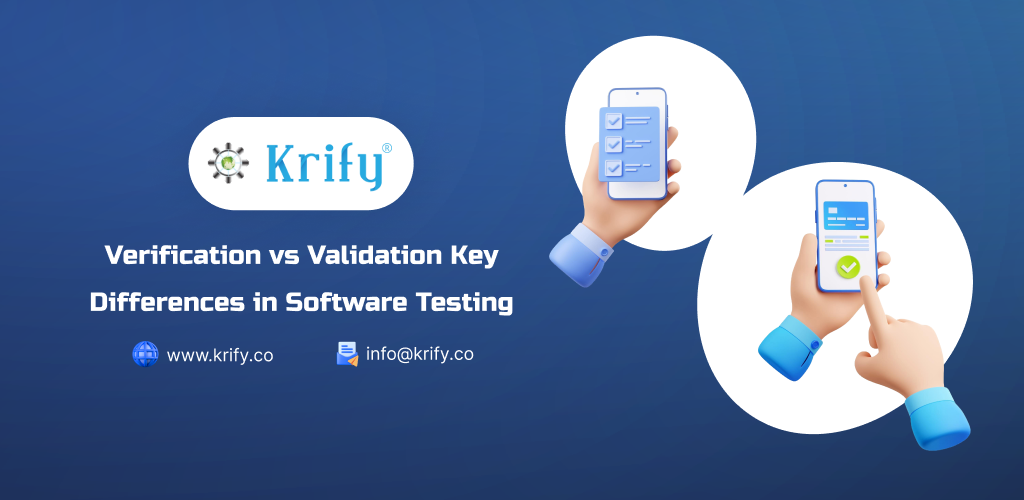In software testing, “verification” and “validation” are often confused but represent two distinct processes. Both are essential for ensuring software quality, yet they differ in their approach and focus. In this blog, we’ll explore the main differences between verification and validation, their roles in software testing, and why both are crucial for delivering reliable software.
What is Verification?
Verification ensures that software is built correctly according to the specified design and requirements. This process does not involve running the software but instead focuses on reviewing and inspecting the work products like design documents, requirements, and code.
Key Features of Verification:
- Process-Oriented: It ensures that the development process follows the specified procedures and standards.
- Static Testing: No code execution is involved. It includes activities like walkthroughs, reviews, and inspections.
- Compliance Checks: Ensures the product adheres to specified standards and requirements.
- Early Detection: Conducted early in the development cycle, helping to identify issues early on, reducing costs and effort for fixes later.
Examples of Verification:
- Walkthroughs
- Code inspections
- Requirement reviews
- Design reviews
What is Validation?
Validation is the process of ensuring that the developed software meets the user’s requirements and expectations. Unlike verification, validation involves executing the software to observe its behavior and functionality in different scenarios.
Key Features of Validation:
- Product-Oriented: It focuses on whether the finished product functions as expected.
- Dynamic Testing: The code is executed to check for issues and ensure performance.
- Fitness for Use Checks: Validation ensures the software performs well in real-world scenarios.
- Late Detection: Occurs during or after the implementation stage in the development cycle.
Examples of Validation:
- Functional testing
- System testing
- User acceptance testing (UAT)
- Performance testing
Key Differences Between Verification and Validation
| Aspect | Verification | Validation |
|---|---|---|
| Objective | Ensures software is built per specifications | Ensures software meets user needs |
| Type of Testing | Static testing (reviews, inspections) | Dynamic testing (executing the code) |
| Focus | Process-oriented | Product-oriented |
| Performed By | Developers, QA team | QA team, end-users |
| Stage | Early stages of development | During or after implementation |
| Goal | Are we building the product right? | Are we building the right product? |
Why Are Both Important?
Both verification and validation are critical to maintaining software quality, focusing on different aspects of the development lifecycle:
- Verification ensures the software is built according to plan, catching problems early.
- Validation guarantees the product works as intended, ensuring user satisfaction.
For example, when building a meal delivery app, verification ensures the functionality adheres to design standards, while validation checks if users can successfully place orders and receive deliveries, testing the app’s usability in real-world conditions.
Conclusion
Verification and validation are integral to producing high-quality software. While verification ensures proper construction, validation ensures the product meets user needs. Together, they guarantee the software is reliable, efficient, and user-friendly. Contact Us



